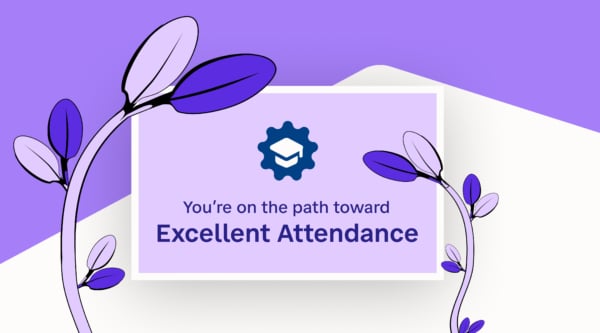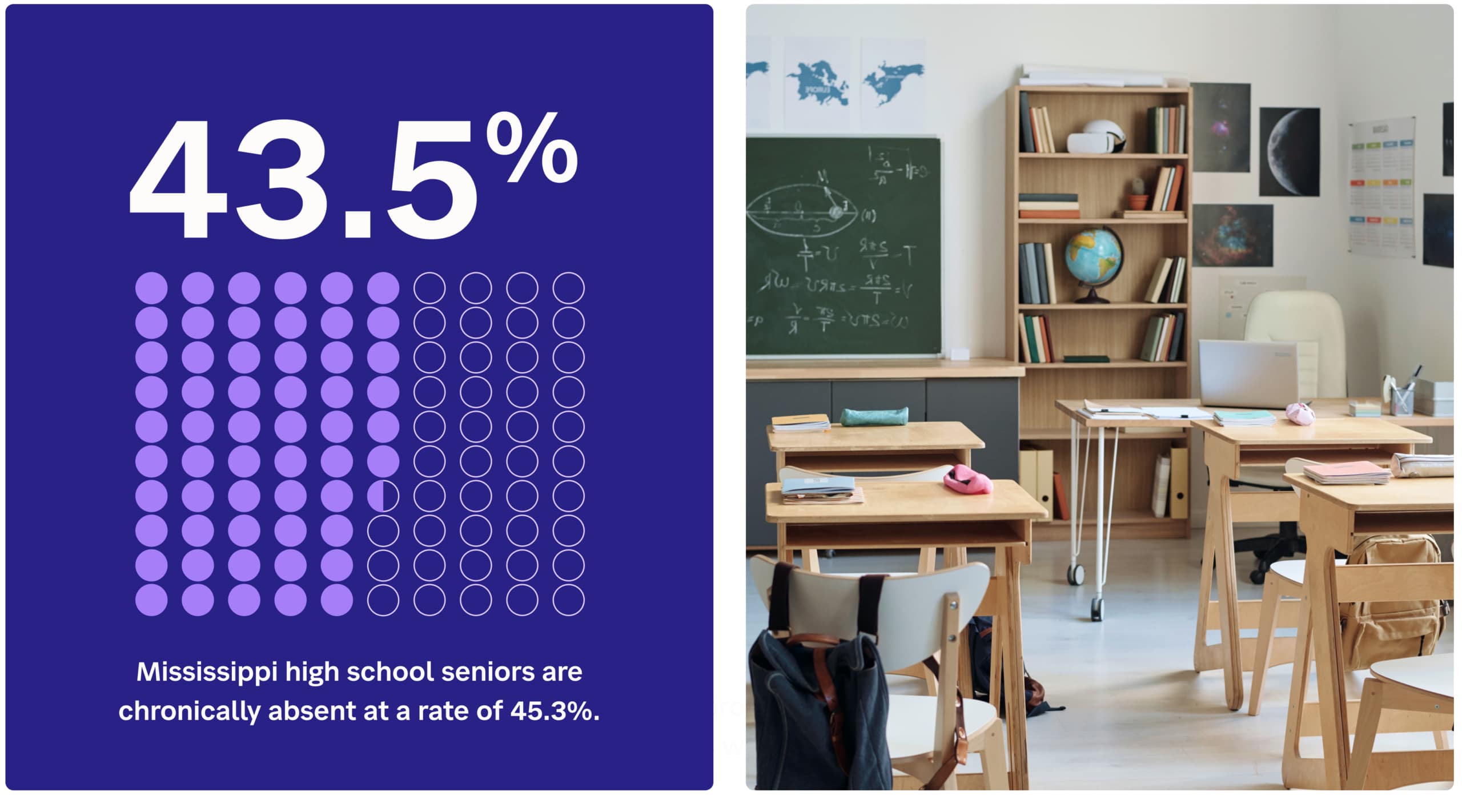
Featured Resource
Why Over Half of California School Districts Trust SchoolStatus
Read More >Join Mission: Attendance to reduce chronic absenteeism in 2025-26! >> Learn How <<





My dad used to open every conversation with, “What do you want first, the good news or the bad news?”
Bad news first! Because, like dinner, it’s good to end with something sweet. In this case, the bad news is that kids aren’t coming to school. In droves. One estimate, from AttendanceWorks, is 1 in 3 K-12 public school students are chronically absent (defined as missing 10% or 18 days of school in a given school year, for any reason).
Mississippi had an absenteeism rate of 13% in 2018-19; in 2021-22 it was 28%. Mississippi high school seniors are chronically absent at a rate of 45.3%. It’s mind-blowing.

The Associated Press and Stanford recently conducted a study and found an estimated 230,000 children simply missing from the system–students who had been enrolled before the pandemic.
Let’s save the why for later. The bigger question is: what can we do?
It starts with school communications. Study after study points to school-home communication as an essential component of student success. Research shows when teachers and building leaders keep families informed on a consistent basis, it leads to improved student:
It boils down to trust. The more home adults hear from their child’s teachers & building leader, the more they feel in the know about what’s happening with their child at school. The more home adults feel involved in school life, the more they trust the adults in the building. And that’s the key.
The more home adults trust the school adults, the more they support their child’s learning.
School is so much more than just a place to be. It’s a place to become. Students who come to school regularly have far better options and opportunities open to them. According to a 2018 report by the World Bank, regular school attendance is associated with increased economic growth and development because students who attend school regularly are more likely to have the skills and knowledge necessary to contribute to the economy and society as a whole. A 2019 report by the National Center for Education Statistics found students who attend school regularly are more likely to have higher academic achievement, higher future earnings, and better health outcomes.
Our eBook walks through the role of school communication as an important piece of the solution to chronic absenteeism and gives you proven school communications strategies and tools you can start implementing today to build back attendance.
There are lots of problems out there out of our control, but our school communities are ours to shape. Let’s get started.
For more information on improving school attendance through effective communication strategies, check out our eBook. Click the button below to start building back attendance today.

 Dr. Kara Stern
Dr. Kara SternDirector, Education and Engagement
Dr. Kara Stern began her career as an ELA teacher, then shifted into administration as a middle school principal. Dr. Stern is a fervent advocate for equitable communication and family engagement. She spent five years as Executive Director at Math for America, where she designed the professional learning community that exists to this day. An unexpected move to Tel Aviv launched her into the world of EdTech where she became the Director of Education Content for Smore and then the Head of Content at SchoolStatus. Outside of work, she indulges her love for reading, devouring two novels weekly, with a particular fondness for heists and spy stories.
News, articles, and tips for meeting your district’s goals—delivered to your inbox.
Ready to learn more about our suite of solutions?
